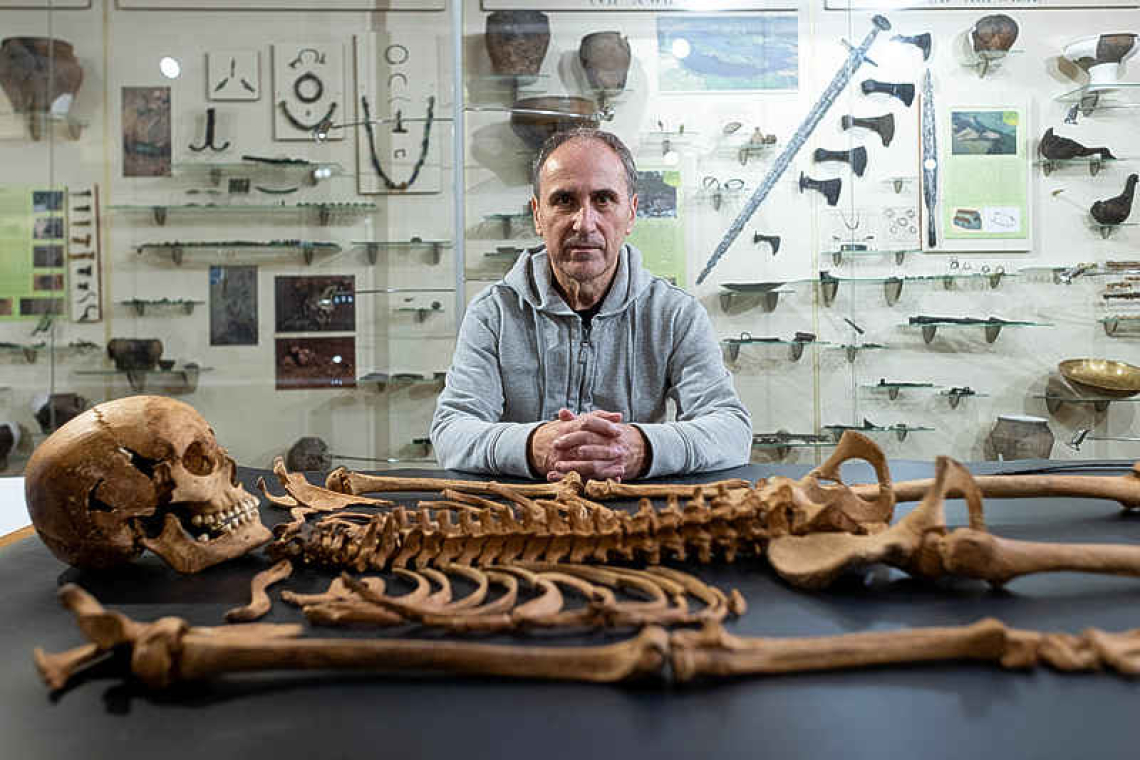Professor Dariusz Polinski, the lead archaeologist from Nicolaus Copernicus University, poses with the remains of a woman found at the 17th century cemetery for rejected people in the village of Pien, in Torun, Poland, October 27, 2023. The woman's body was found with a padlock on her leg and a sickle around the neck which suggest the person was believed to be a 'vampire' and was secured to the ground to avoid 'her rising from the grave'.
PIEN, Poland--Archaeologists in Poland have uncovered the remains of a 17th-century child padlocked to his grave to stop him rising from the dead, a discovery that turns the spotlight on beliefs in vampires as Halloween approaches.
The bones of the six- or seven-year-old are the most recent find in a cemetery in the northern village of Pien dating from an era that viewed ghosts, zombies and other supernatural apparitions as more than merely fancy dress options. "This is a cemetery for rejected people, who were certainly feared after death, and perhaps also during life ... who were suspected of having contacts with unclean forces, people who also behaved differently in some way," said Dariusz Polinski, a researcher on mediaeval burials at Nicolas Copernicus University in the city of Torun. The child was buried facedown with a triangular iron padlock under its foot, in a probable effort to keep it from sitting up and leaving the grave to feast on the living, he added. "These are people who, if it was done intentionally, were afraid of ... contact with these people because they might bite, drink blood," Polinski said. The child's grave was desecrated at some point after burial and all bones removed apart from those in the legs. Archaeologists have found other methods used to stop the living dead, with Polinski describing strange practices found in some burials. "There were also a large number of graves with stones ... which were also supposed to protect against the deceased, placed in various places, for example on the elbow, on the larynx or on the neck."







